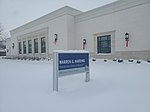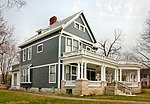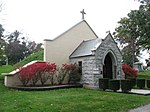Marion, Ohio

Marion is a city in and the county seat of Marion County, Ohio, United States. The municipality is located in north-central Ohio, approximately 50 miles (80 km) north of Columbus. The population was 36,837 at the 2010 census, and is estimated to be 35,883 in 2019. It is the largest city in Marion County and the principal city of the Marion, OH Micropolitan Statistical Area. It is also part of the larger Columbus–Marion–Zanesville, OH Combined Statistical Area, which has 2,481,525 people according to the US Census 2017 estimate. President Warren G. Harding, a former owner of the Marion Star, was a resident of Marion for much of his adult life and is buried at Harding Tomb.The city and its development were closely related to industrialist Edward Huber and his extensive business interests. The city is home to several historic properties, some listed on the National Register of Historic Places listings in Marion County, Ohio. Marion currently styles itself as "America's Workforce Development Capital" given public–private educational partnerships and coordination of educational venues, from four and two–year college programs to vocational and technical training and skill certification programs.The mayor of Marion is Scott Schertzer.
Excerpt from the Wikipedia article Marion, Ohio (License: CC BY-SA 3.0, Authors, Images).Marion, Ohio
South State Street,
Geographical coordinates (GPS) Address Nearby Places Show on map
Geographical coordinates (GPS)
| Latitude | Longitude |
|---|---|
| N 40.586666666667 ° | E -83.126388888889 ° |
Address
Marion Post Office
South State Street
43302
Ohio, United States
Open on Google Maps








